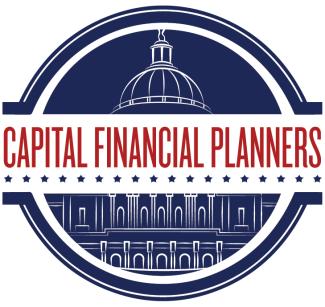-
When do I receive my tax documents for my accounts? (1099’s)
Below are the release dates for the 2024 tax year:
- 1099-R and 1099-Q (January 17th)
- 1099-DIV – for accounts holding more complex securities. (February 7th and 14th)
- Preliminary 1099 - includes accounts that won’t receive a final 1099 until all income data is finalized (February 14th)
- Form 5498 (February 21st and May 23rd)
- 1099-DIV - final version (February 21st, 28th, and March 7th)
-
I did a Roth backdoor contribution; how do I report this on my taxes?
A Roth backdoor contribution allows you to sidestep the income limits that prevent folks from contributing directly to a Roth IRA. Instead, one makes a nondeductible deposit to a Traditional IRA and converts those after-tax dollars to a Roth without incurring any additional taxes.
Logic: Since you never took a tax deduction on the initial contribution to the Traditional IRA, you will not be taxed on those funds that are moved to a Roth.
Individuals who utilize this method need to make sure that they report the nondeductible contribution on the 8606 on their tax return.
More information and instructions can be found on the following links:
If you use TurboTax: https://thefinancebuff.com/how-to-report-backdoor-roth-in-turbotax.html
If you use H&R Block software: https://thefinancebuff.com/how-to-backdoor-roth-hr-block-software.html
If you use an accountant, you need to let them know that know you made a nondeductible contribution to a Traditional IRA, that was converted into the Roth IRA, and provide them with the 1099-R for the Roth conversion.
I did a Roth conversion this year and withheld taxes, how do I report this on my taxes?
You will receive a 1099-R from LPL with the necessary information to input or provide to your accountant.
-
I did a Roth conversion this year and was told I need to pay estimated taxes. How/where do I do this?
For federal taxes, you can use the IRS Direct Pay system here: https://www.irs.gov/payments/direct-pay. This method doesn’t require you to create an account.
You can also pay taxes through the EFTPS system: https://www.eftps.com/eftps/ Note, you will need to plan ahead as a PIN will be mailed to you which is required to create an account. If you are converting at the end of the year, please plan accordingly!
For state taxes, you can use the following link: https://www.irs.gov/businesses/small-businesses-self-employed/state-government-websites to find information on each state you need to pay estimated state taxes.
-
When are my estimated tax payment due?
The due date depends on when the year the taxable event occurred. The deadlines are spaced out into four quarters of the year as follows:
- January 1 to March 31 – April 15
- April 1 to May 31 – June 15
- June 1 to August 31 - September 15
- September 1 to December 31 – January 15 of the following year.
**Note: If these due dates fall on a Saturday, Sunday, or legal holiday, the payments are due the next business day.
You may send estimated tax payments with Form 1040-ES. You can pay online, by phone, or from your mobile device using the IRS2Go app. Visit IRS.gov/payments to view all the options.
-
What is the penalty if I underpay my taxes?
In order to avoid underpayment, the best practice would be to pay 110% of last year’s tax bill. If you pay that amount, the IRS will not impose any penalties for underpayment.
-
What is Net Investment Income Tax? (NIIT)
Net Investment Income Tax (NIIT) is an additional 3.8% tax assessed on non-retirement asset growth when a person(s) earns above a certain threshold. More information can be found on the IRS website here: https://www.irs.gov/newsroom/questions-and-answers-on-the-net-investment-income-tax
-
What is form 8949 and Schedule D, when do I need to use this?
If you receive form 1099-B or 1099-S (or substitute statement) with the amounts that were reported to you and the IRS, you’ll need to use form 8949 to report any long-term capital gains/losses. The subtotals from this form will then be carried over to Schedule D (Form 1040), where gain/loss will be calculated in aggregate.
-
What is a QCD, the benefits, and rules around it?
A QCD is a qualified charitable distribution that can possess many benefits. Once required minimum distributions (RMDs) begin, this can be used to satisfy the RMD requirement while avoiding your AGI being increased which could lead to a higher tax bracket or Medicare Part B premium. However, it can only be made once you are 70.5 or older.


